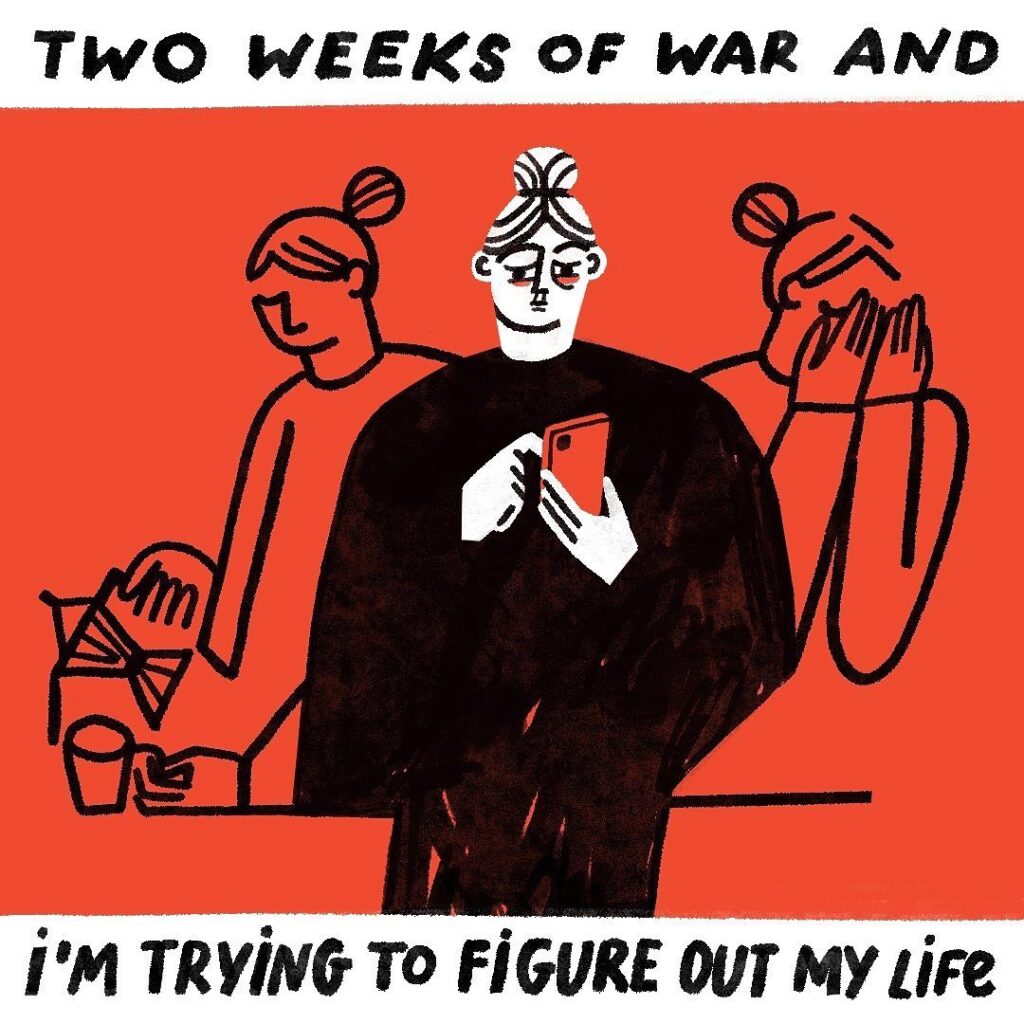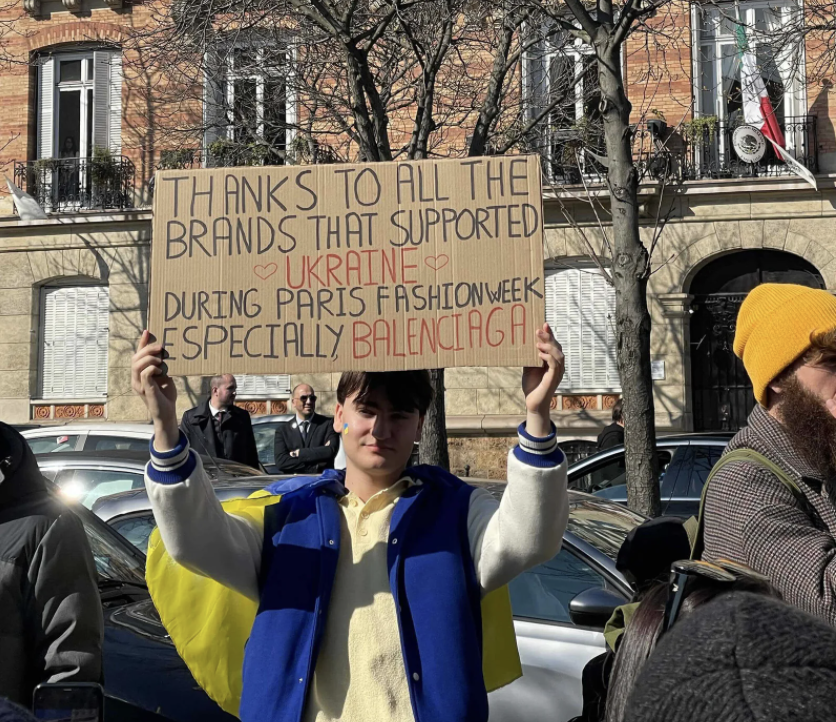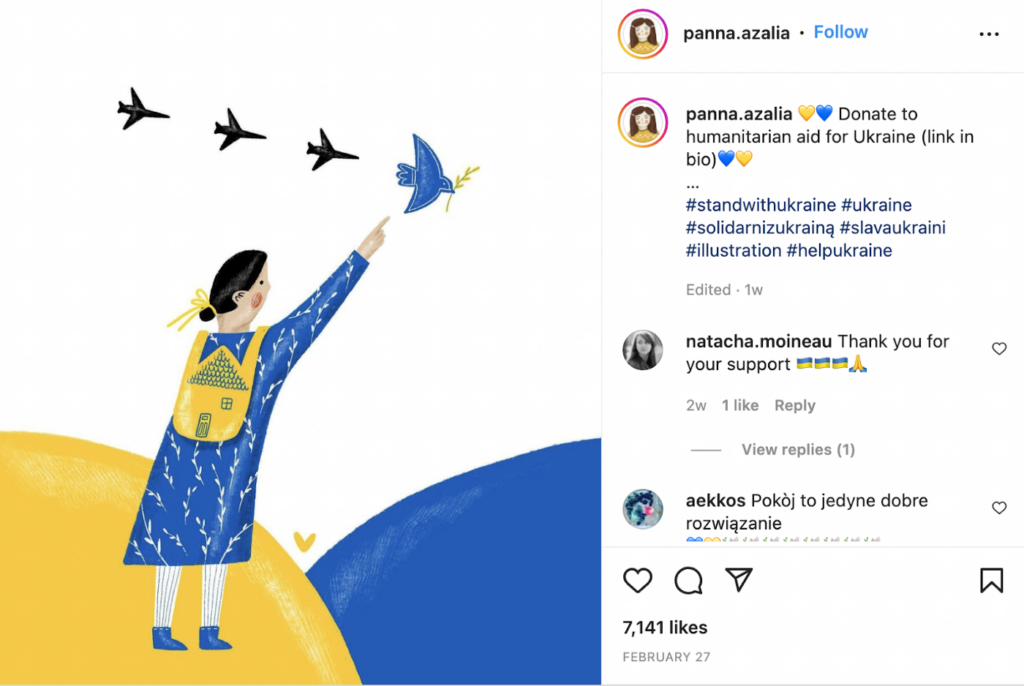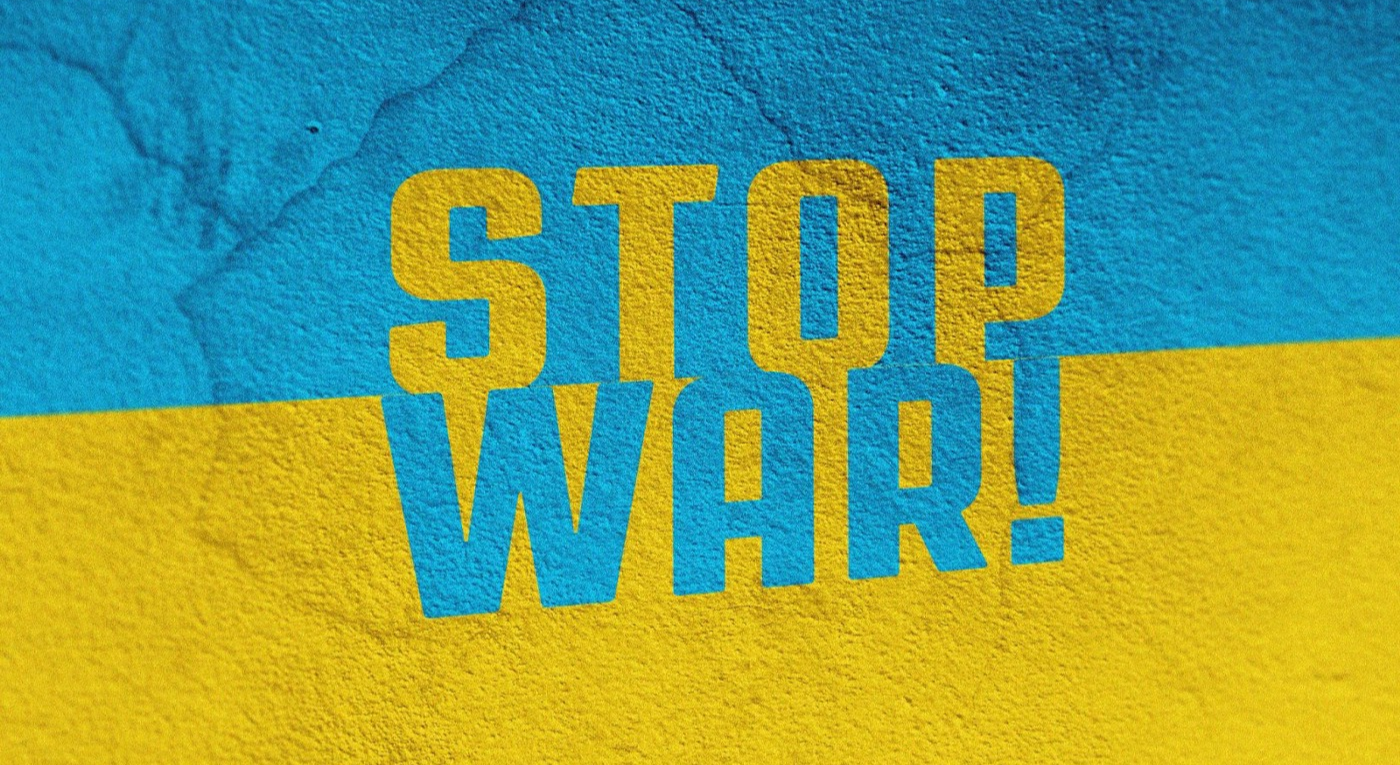When Ukraine’s worst scenario was just a rumor soaring in the air and there were only rare media mentions of Russian troops moving closer to our borders, I decided to leave my country, escaping the possible war. A few weeks later, a full-scale Russian invasion of Ukraine started.
On the morning of February 24, I woke up and checked business messages and news notifications on my phone. “At 5:30 am, explosions were heard near the Boryspil airport in Kyiv, Ukraine,” — said Ukrainian news. I wish it was just a nightmare, but it was a shocking reality. A few days later, I found a YouTube video showing a combat missile exploding near my house in Kyiv. This is when I realized there is no way back home.
My story is just one of the millions, and many of them are way more tragedic. These heartbreaking events shacked up the everyday lives of many countries and made us rethink our values. It affected all industries, and digital design wasn’t an exception. It experienced many strategic changes which seemed temporary but which can extend for years. Let’s consider the main transformations that happened to digital design amidst the war in Ukraine.
Personal Storytelling
Nothing is more powerful than a personal story that tells somebody’s unique perspective and vision of these events. Many designers exposed to the war in Ukraine started sharing their experiences through digital design aimed to bring awareness of the current events to the public. On the other hand, designers who have even never been to Ukraine started expressing support for its citizens in creative works too.
From business magazines to design blogs, we might see more and more digital illustrations and posters with personal stories of Ukrainians everywhere on the web. Here is an example of the illustration created by Ukrainian artist Mari Kinovich per the request of The Economist to illustrate her life since Russian forces invaded her country.

The design community can’t also stay silent: top industry magazines like DesignWeek, Smashing Magazine, and UX Magazine are continuously sharing personal stories of Ukrainian designers to grow awareness of current events.
Colors of The Year: Freedom Blue & Energizing Yellow
The Pantone Color Institute has shown support for Ukraine via a social media image with a shade of blue #0057b7 and yellow #ffd700, both the colors of the Ukrainian flag. The colors were labeled Freedom Blue and Energizing Yellow and alongside them was a picture of two sunflowers against a blue sky.
Blue and yellow have also become the main colors of the Paris Design Week that were opened with Balenciaga models wearing clothes in these colors.
“The Ukrainian flag was draped on guests’ seats and the designer recited a poem in Ukrainian by one of the country’s treasured poets Oleksandr Oles.” — CNN about the start of the Paris Fashion Week happening in early March this year.

Blue and yellow have quickly integrated into the digital design too, featuring updated interfaces of online services and mobile apps that “stand with Ukraine.”
Anti-War Propaganda
This is a very expected reaction of the digital design community to the war. Digital designers all over the world started dedicating their art to anti-war propaganda, encouraging people to stop the awful events in Ukraine. Illustrators and designers are crafting social cards and custom illustrations, as well as typefaces, and even NFTs, with links to resources of humanitarian aid organizations.

Logo Rebranding
Companies unite to display solidarity with Ukraine by rebranding their logos in blue and yellow.
In an official press release, Marcel Knobil, founder of Superbrands (the world’s independent brand authority) and creator of Brand Solidarity said: “By expressing our support for the people of Ukraine in such a highly visible manner, we hope we can help raise their spirits during their darkest of days and push for peace.”
Brand Solidarity encourages brands all over the globe to display the Brand Solidarity logo (or just the Ukrainian flag) on all or any promotional material (whether it be a website, advertising, packaging, etc). Many brands including Grammarly, LaMetric, and Privat24 have already rebranded their logos.


Respond of design teams to the war
The war in Ukraine is affecting the design community in the way that some product design agencies make a decision to donate to peaceful people exposed to the danger in Ukraine now. In an official press release, Sergey Krasotin, Co-Founder of Humbleteam, a design agency that donated to civilians in Ukraine through the international organization Red Cross and Czech-based fund Člověka v Tísni, commented in a press release on Business Insider:
“Stating our apolitical position toward Russian and Ukrainian nations, we contributed to charity funds to help those suffering from the war unfolding in Ukraine right now. No nation deserves to be a part of the heart-breaking circumstances we all are now witnessing in this region. Nobody should stay alone and unprotected in this situation. This is why we made a decision to donate a significant amount of money to civilians in hopes it will be used for humanitarian purposes and protection of human lives.”
Massive Hires of Ukrainian Designers
You shouldn’t be a visionary to predict that thousands of talented designers are now seeking ways to relocate from Ukraine to protect their lives. Most of them are also looking for a new job to secure their living abroad. Today, we witness the foundation of new charity funds and non-profit organizations aimed to help designers impacted by the war in Ukraine reach safety and find new work. If you are searching for a vacancy or would like to help Ukrainian designers to find it, you can find useful information on Designers United For Ukraine.
Bottomline: Support Ukraine With Your Design Powers
The design community is huge and powerful, everyone’s contribution matters! By writing this article, I’m encouraging everyone to support Ukraine with your design powers. Here you can find a list of useful links to charity funds and non-profit organizations you can join or spread the information about them to foster peace. Glory to Ukraine!








